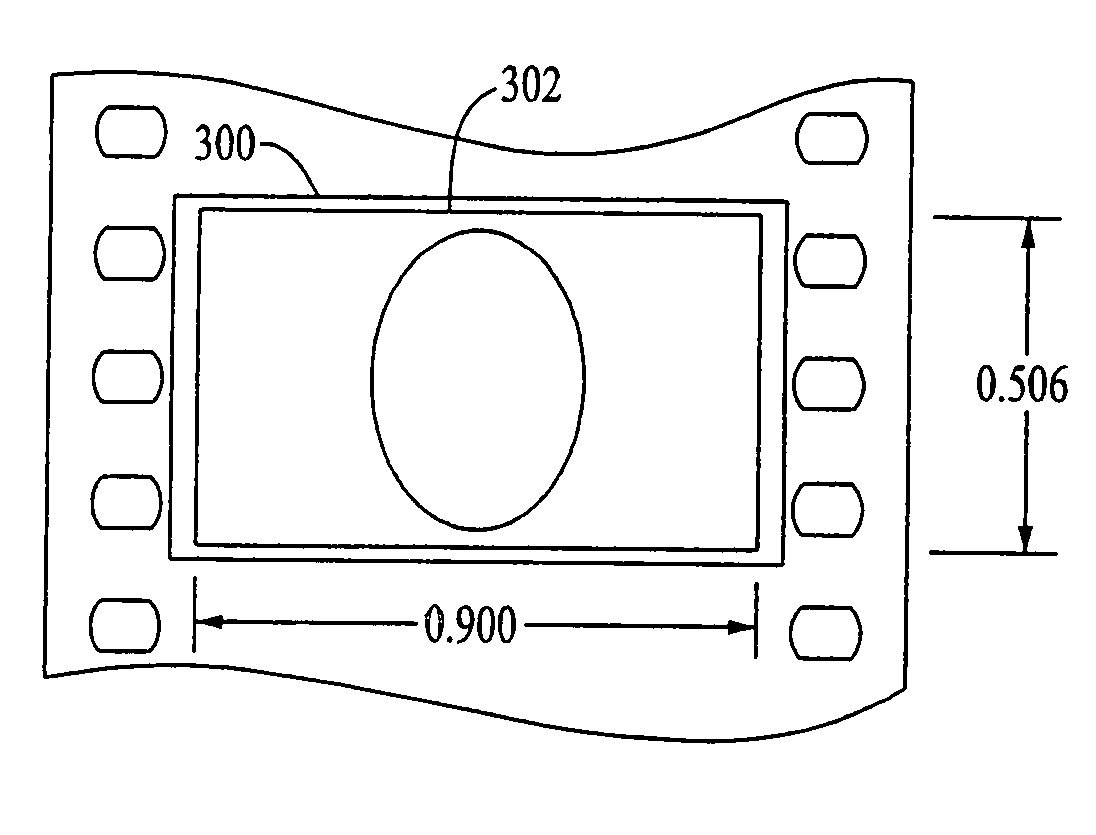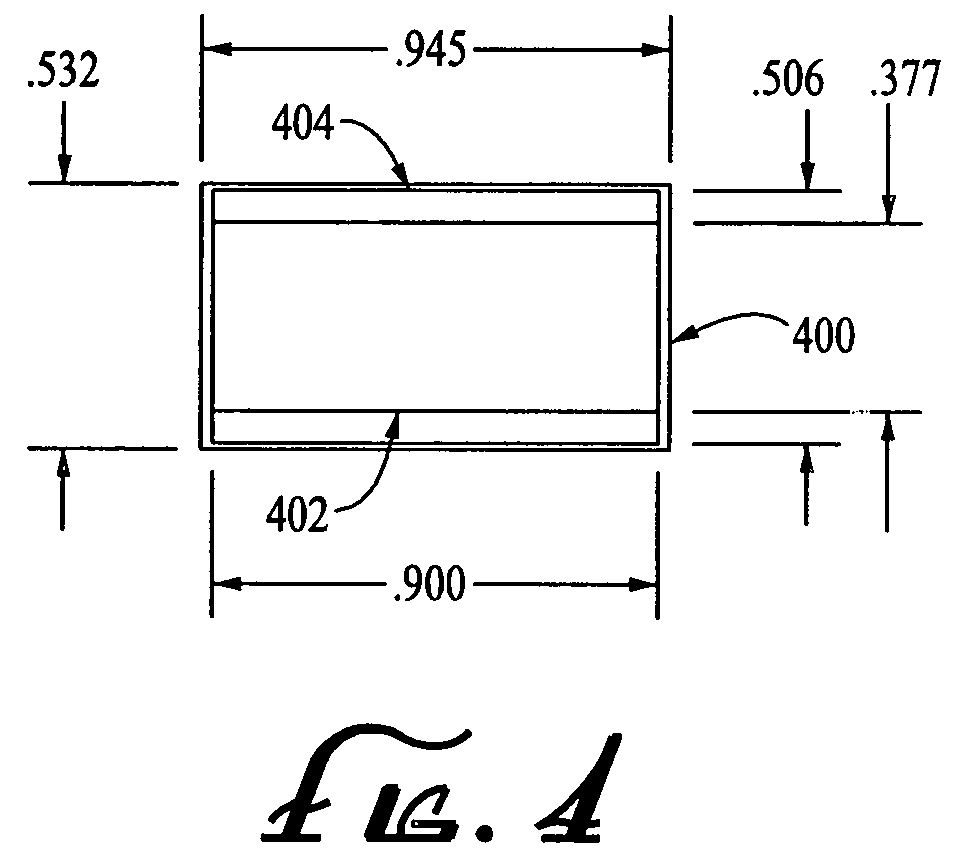Anamorphic three-perforation imaging system
an imaging system and three-perforation technology, applied in the field of optimization of image quality, can solve problems such as not maximizing overall image quality, and achieve the effects of reducing magnification and image degradation, reducing the amount of anamorphic squeeze, and reducing image degradation
- Summary
- Abstract
- Description
- Claims
- Application Information
AI Technical Summary
Benefits of technology
Problems solved by technology
Method used
Image
Examples
Embodiment Construction
[0035]In the following description of preferred embodiments, reference is made to the accompanying drawings that form a part hereof, and in which is shown by way of illustration specific embodiments in which the invention may be practiced. It is to be understood that other embodiments may be utilized and structural changes may be made without departing from the scope of the preferred embodiments of the present invention.
[0036]Embodiments of the present invention utilize a maximized 16:9 aspect ratio image capture area to lower display magnification and image degradation due to display magnification, and to reduce the amount of anamorphic squeeze during photography to lower image degradation due to anamorphosis. The amount of anamorphic squeeze used during filming is in the ratio of 2.40:1 over 16:9 (the ratio of the display aspect ratio over the image capture aspect ratio or approximately 1.34) to maximize the image capture area. Note than an anamorphic squeeze other than the ratio ...
PUM
| Property | Measurement | Unit |
|---|---|---|
| aspect ratio | aaaaa | aaaaa |
| aspect ratio | aaaaa | aaaaa |
| aspect ratio | aaaaa | aaaaa |
Abstract
Description
Claims
Application Information
 Login to View More
Login to View More - R&D
- Intellectual Property
- Life Sciences
- Materials
- Tech Scout
- Unparalleled Data Quality
- Higher Quality Content
- 60% Fewer Hallucinations
Browse by: Latest US Patents, China's latest patents, Technical Efficacy Thesaurus, Application Domain, Technology Topic, Popular Technical Reports.
© 2025 PatSnap. All rights reserved.Legal|Privacy policy|Modern Slavery Act Transparency Statement|Sitemap|About US| Contact US: help@patsnap.com



